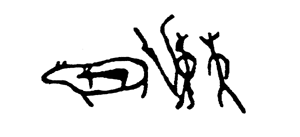Uranus



Observers using the Keck Observatory in Hawaii have seen huge storms develop on Uranus. As can be seen in the photos.
Some wanted to call the planet Herschel, but the Herschels called it Georgius Sidus (George's Star in Latin) after King George III who funded them. Bode suggested Uranus after the Greek God of the Heavens who had been castrated by his son Chronos the God of Time (see Saturn). Eventually this was to be accepted internationally as the planet's name.
It is possible the rings were first discovered 200 years earlier in 1727 by Herschel.
New edge on view of the rings of Uranus from Hubble in 2007.
In August 1994 Hubble took pictures of Uranus and found more interesting weather. The planet's angle to the Sun had changed as it had moved on its orbit. Unlike the other gas giants, Uranus does not have an internal heat source, so its changes in weather dependent far more on the effect of the Sun.
The poles of Uranus' magnetic field are offset from the axis of rotation by 60 degrees. This was used to calculate the rotation period of 17.3 hours. The 'magnetail' trailing behind Uranus corkscrews because of the tremendous difference between the magnetic and rotational poles.
 | Hubble space telescope found aurora on Uranus and tracked it as planet rotated. |

Observers using the Keck Observatory in Hawaii have seen huge storms develop on Uranus. As can be seen in the photos.
27 satellites discovered so far. The Herschels started the custom of naming the moons of Uranus after fairies and other characters in Shakespeare's plays, with Titania and Oberon. The other larger satellites are Ariel, Umbriel, Miranda. Those discovered by Voyager 2 in 1986 have been named Cordelia, Orphelia, Bianca, Cressida, Desdemona, Juliet, Portia, Rosalind, Belinda, and Puck. Satellite discovered 2001 has been named Trinculo. Satellites discovered in 2003, have now been named Cupid and Mab.
More on Cupid, Mab and the rings - dust from Mab forms one of the rings.
 Miranda is 236±3 kilometres in radius, 1.35±0.39 density. It was discovered in 1948 by Gerard Kuiper. It has a very mixed and interesting terrain of ice, silicate rocks and frozen methane. The names of surface features are taken from Shakespeare. There are grooved landscapes, cratered like on our Moon, and also giant scarps or cliffs. There are three massive, prominent angled, ridged features. These are called the Inverness Corona, the Arden Corona and the Elsinore Corona. It is speculated that Miranda had once been severely fractured, and has since reassembled, the features being caused by the fragments. This is by no means certain though.
Miranda is 236±3 kilometres in radius, 1.35±0.39 density. It was discovered in 1948 by Gerard Kuiper. It has a very mixed and interesting terrain of ice, silicate rocks and frozen methane. The names of surface features are taken from Shakespeare. There are grooved landscapes, cratered like on our Moon, and also giant scarps or cliffs. There are three massive, prominent angled, ridged features. These are called the Inverness Corona, the Arden Corona and the Elsinore Corona. It is speculated that Miranda had once been severely fractured, and has since reassembled, the features being caused by the fragments. This is by no means certain though.

 Ariel, 579±2 kilometres radius, 1.66±0.30 density. Ariel was discovered in 1851 by William Lassell. It is still very active geologically, so few impact craters are visible. Its features are named after good spirits in world myths. Valley and fault scarps crisscross the surface, which has been smoothly flooded in places with ice. There has been tectonic activity with plate movement causing the faults on the surface. Ariel may still be an active world.
Ariel, 579±2 kilometres radius, 1.66±0.30 density. Ariel was discovered in 1851 by William Lassell. It is still very active geologically, so few impact craters are visible. Its features are named after good spirits in world myths. Valley and fault scarps crisscross the surface, which has been smoothly flooded in places with ice. There has been tectonic activity with plate movement causing the faults on the surface. Ariel may still be an active world.
 Umbriel is 586±5 kilometres in radius, 1.51±0.28 density. Also discovered in 1851 by William Lassell. Its features are named after evil spirits. Umbriel is a very dark, still, world with many craters. Nothing has happened here for a very long time.
Umbriel is 586±5 kilometres in radius, 1.51±0.28 density. Also discovered in 1851 by William Lassell. Its features are named after evil spirits. Umbriel is a very dark, still, world with many craters. Nothing has happened here for a very long time.
 Titania is 790±4 kilometres in radius, density is 1.68±0.09. Discovered by the Herschels in 1787. Its features are named after female characters in Shakespeare. Subsidence features and trenches and scarps show that Titania has has volcanic processes, perhaps caused by tidal heating, and has been an active world geologically.
Titania is 790±4 kilometres in radius, density is 1.68±0.09. Discovered by the Herschels in 1787. Its features are named after female characters in Shakespeare. Subsidence features and trenches and scarps show that Titania has has volcanic processes, perhaps caused by tidal heating, and has been an active world geologically.
 Oberon was also discovered by Caroline and William Herschel in 1787. Its radius is 762±4 kilometres. Its density is 1.58±0.10. Its features are named after Shakespearian heros. Oberon is mostly water ice, silicates and methane with other carbon related compounds. Its surface is heavily cratered with possible faults - there is no evidence of any recent geological activity.
Oberon was also discovered by Caroline and William Herschel in 1787. Its radius is 762±4 kilometres. Its density is 1.58±0.10. Its features are named after Shakespearian heros. Oberon is mostly water ice, silicates and methane with other carbon related compounds. Its surface is heavily cratered with possible faults - there is no evidence of any recent geological activity.
 |